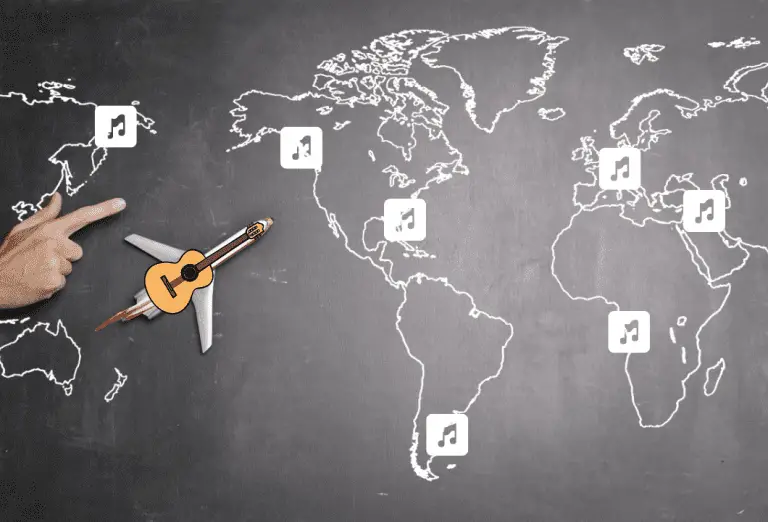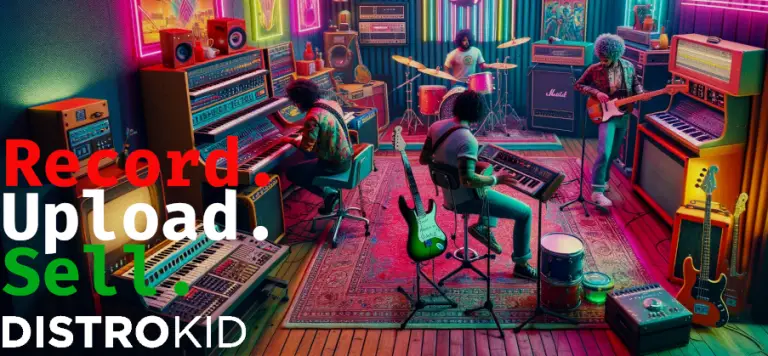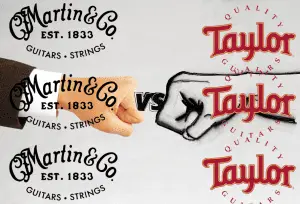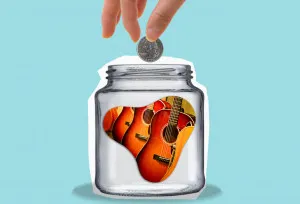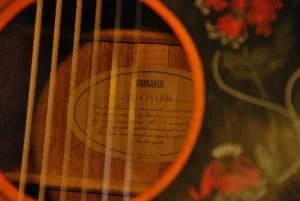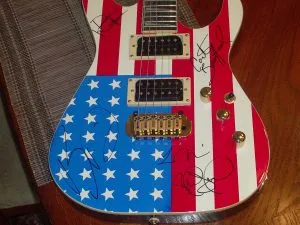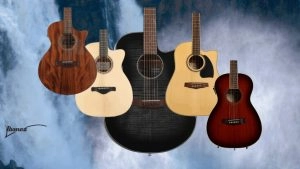If you’ve dipped your toes into the treacherous waters of music theory, there’s a chance you’ve heard of the CAGED system. Maybe you’ve even used it to improve your skills. But did you know that the CAGED method works with minor chords, too?
As with major chords in CAGED (C, A, G, E, and D), you can easily map out the minor chords on your guitar neck and play them wherever you are on the fretboard.
CAGED seems daunting, but it’s one of the easiest ways to familiarize yourself with your fretboard, and it’s simple once you’ve got the hang of it. So, let’s dive into the minor CAGED chord system!
• • •
What Is The CAGED Minor Chord System?
All musical notes and minor chords are interconnected on a fundamental level; your fretboard is no exception. The strings seem to be arranged in a strange sequence, but there’s a logical reason behind their tuning. Patterns of notes repeat themselves at regular intervals.
The CAGED minor system helps you to get to know these patterns on your fretboard. You can use this knowledge to find the minor chords you want, where you want, by learning five minor chord shapes, then familiarizing yourself with the patterns.
These are the Minor chord shapes that CAGED utilizes: Cm, Am, Gm, Em, and Dm.
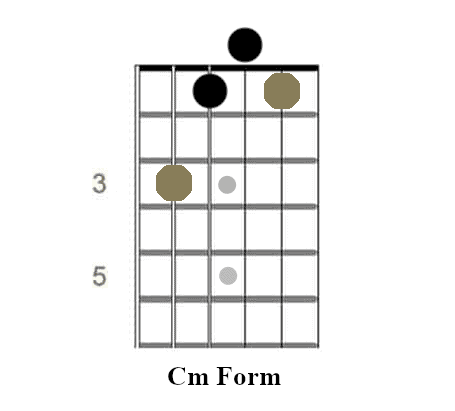

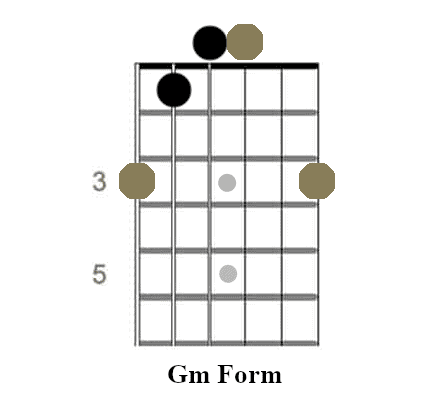
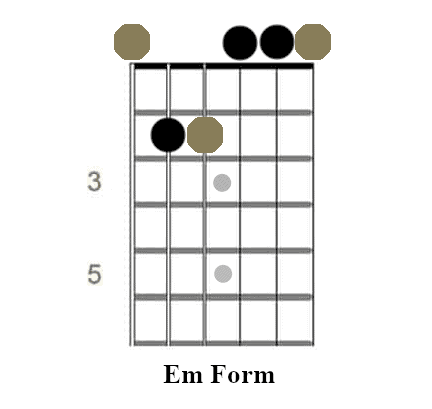
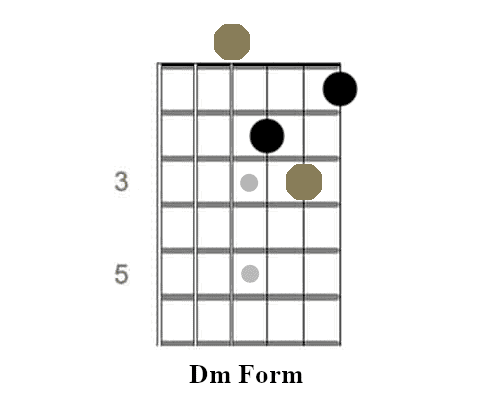
• • •
How The Minor CAGED Chord System Works
You can play any of the minor chords anywhere on the neck using any minor chord’s open shape. It works just like barre minor chords. In fact, barre minor chords use the CAGED method, with the index finger guiding.
Moving The Minor CAGED Shapes Up And Down The Neck
Let’s look at the chord forms of the minor CAGED framework.
The Cm Form
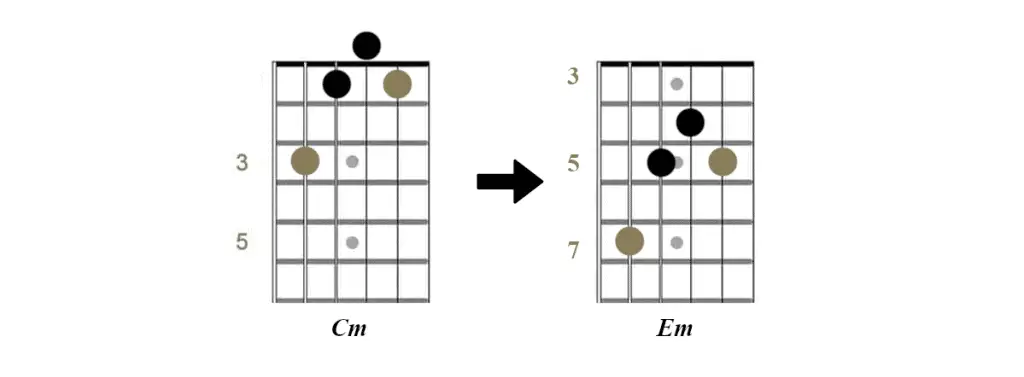
When you press the open Cm chord shape, but move your hand, so the lowest root note is on the 7th fret, you will play an Em chord. The Cm form is nearly impossible using the CAGED system.
The Am Form
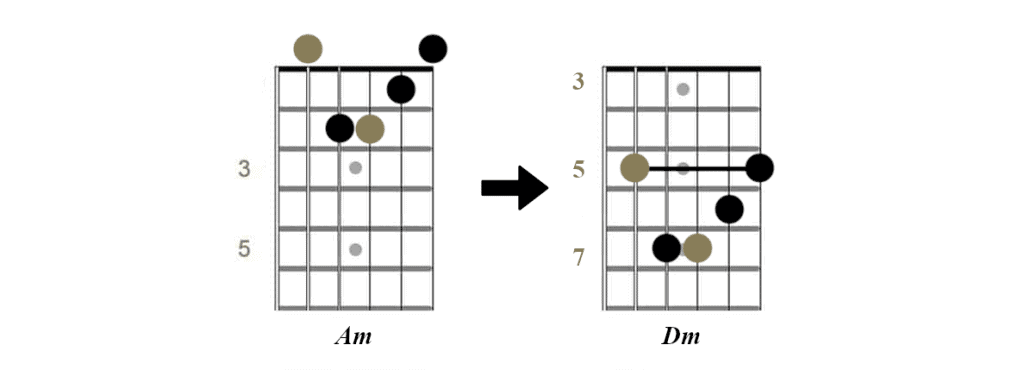
Pressing the open Am chord shape but moving up five frets and barring the 5th fret will give you a Dm chord. This is one of the three commonly-used CAGED minor shapes.
The Gm Form
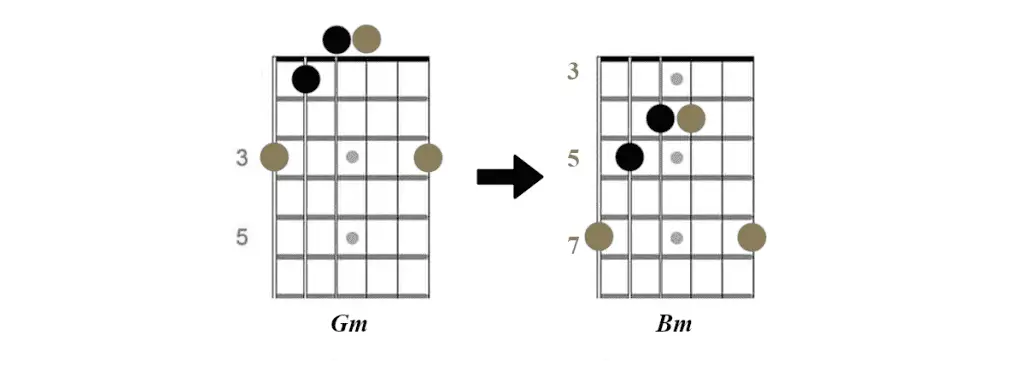
Moving the Gm open chord so the root note is on the 7th fret will let you play a Bm chord. The Gm form is difficult to implement in CAGED without removing strings, for example, so people don’t really use it.
The Em Form
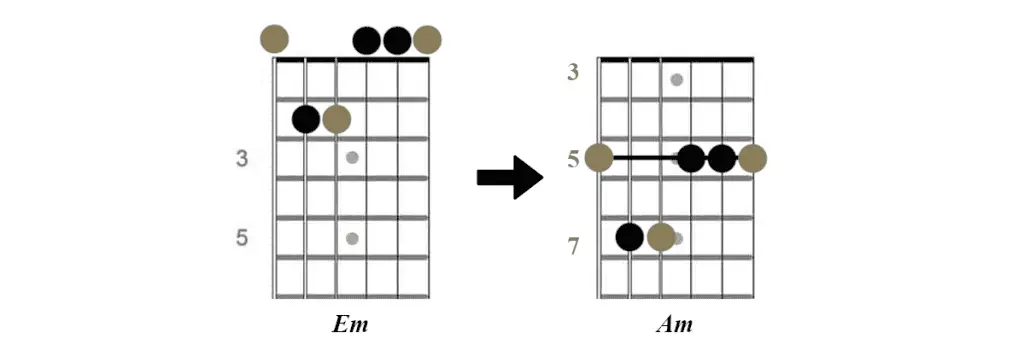
This is another commonly-used CAGED minor shape. Pressing the open Em form and moving your fingers up 5 frets, barring fret 5, will make an Am chord.
The Dm Form
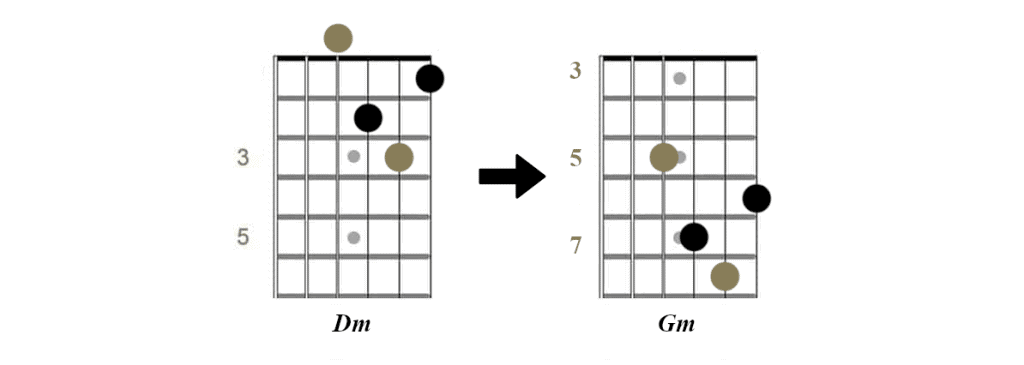
Pressing an open Dm chord and moving up 5 frets, pressing the 5th fret with your index finger, will make a Gm chord. The Dm form is also a popular CAGED minor chord.
Connecting the CAGED Minor Shapes To Each Other

The second point to remember is that all CAGED minor chord shapes are connected to other shapes (as it works with the major chord system):
- E minor chord shape connects with D minor chord shapes.
- D minor chord shape connects with C minor chord shapes.
- C minor chord shape connects with A minor chord shapes.
- A minor chord shape connects with G minor chord shapes.
- G minor shape connects with E minor chord shapes.
This process repeats for the length of your fretboard, so sometimes you can play multiple minor chords while barely moving your hand across the neck. A chord diagram will help you memorize these positions. Download this CAGED system for minor chords PDF, which includes a chord diagram.
CAGED Minor Chords Root Note Patterns
Another great mnemonic tool for mastering the minor CAGED system is studying how the roots of each of the chord forms look throughout the fretboard.
Here’s what the root notes for the Cm form look like:
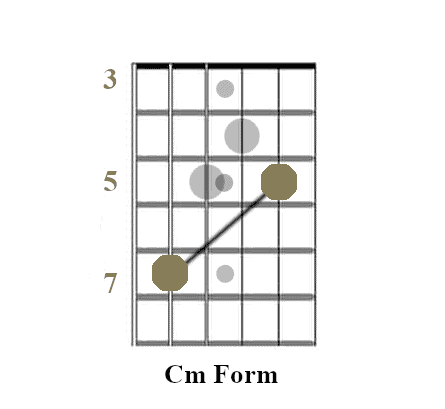
Root notes for the Am form:
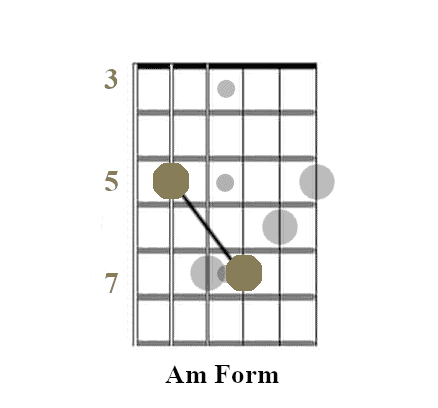
Gm form root note pattern:
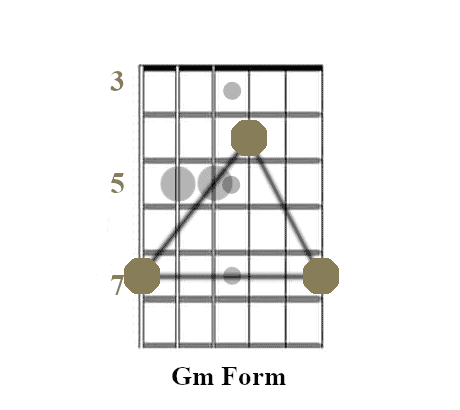
Root note pattern for the Em form:
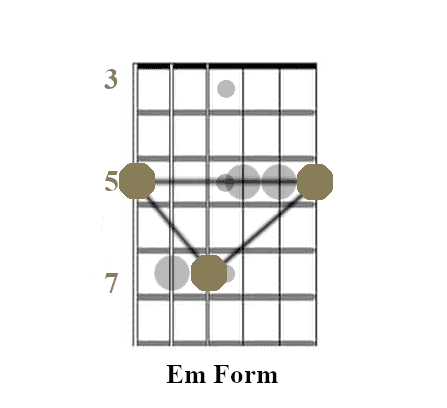
And the root notes for the Dm form:
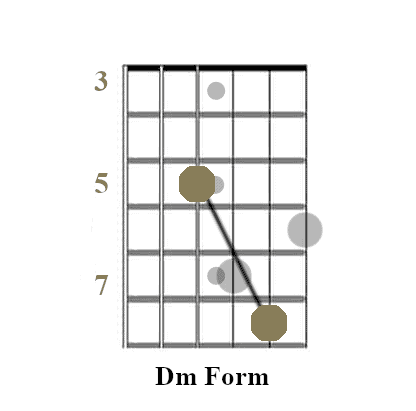
CAGED Minor 7th Chords
CAGED minor chord shapes work with all minor chords, including the minor 7th. When you’re playing an open E minor chord and place a finger on the 2nd string in the 3rd fret, it turns into an E minor 7th. Changing it to a G minor barre chord and doing the same with the 2nd string, but in the new position, will make it a G minor 7th.
CAGED Minor Arpeggios
Arpeggios, or broken chords, work the same way. Pressing the correct strings on the fretboard and picking them individually will deliver the right notes. The minor CAGED chord system includes every variation and method, and you can even use it to improvise guitar solos once you know it well enough.
• • •
Guitar Songs with CAGED Minor Chords
A great way to master CAGED for minor chords is by practicing each of the chord shapes through songs. Some famous pieces that use the CAGED method’s minor chords include:
“Californication” – The Red Hot Chili Peppers
“Smells Like Teen Spirit” – Nirvana
“Sultans Of Swing” – Dire Straits
• • •
The CAGED Minor System Explained On YouTube
YouTube has many great resources to help you understand and master the CAGED minor chord method. A few of our favorites are:
CAGED Theory – Minor Chords
Move Forward Guitar gives us one of the simplest explanations of how the CAGED minor chord system works. This is the perfect video for newcomers.
CAGED System for minor Chords on guitar. Play Minor chords all over the neck
Active Melody shows precisely how the basic open chord shapes translate into different minor chords as you move up the neck. The video expertly explains barre chords and how they link with the CAGED minor system.
How to use the CAGED system to play a Solo
Anyone wondering about using the CAGED framework for minor chords on arpeggios and guitar solos will find this video immensely helpful. Scott Paul Johnson demonstrates how easy it is to improvise on the spot using CAGED minor chord shapes, with brilliant examples anyone can follow.
• • •
Frequently Asked Questions

The CAGED system isn’t challenging to master, but it is complex. Here are some of the questions that people ask about minor chords using CAGED.
Does the CAGED system work on minor pentatonic?
The CAGED system works perfectly on the minor pentatonic. In fact, it’s a great idea to learn the minor pentatonic in the CAGED positions to improve your guitar skills.
Is the CAGED minor system worth learning?
CAGED is simply an intuitive way to get to know your fretboard, and that understanding will help you to become a better guitarist. But there are other ways to learn the same things, and guitarists are pretty divided on which method is best. In the end, it’s up to you to decide, but CAGED is an excellent system for playing minor chords.
How can I memorize the CAGED minor system?
The best way to memorize the minor chords in CAGED is to visualize the chord shapes rather than the exact fret positions on the neck. With CAGED, the frets will change, but the chord shapes will always be the same.

